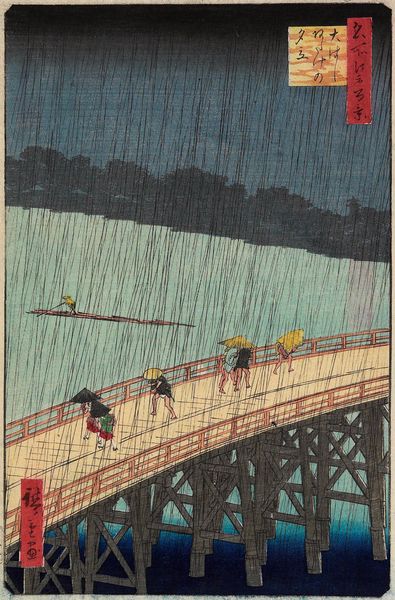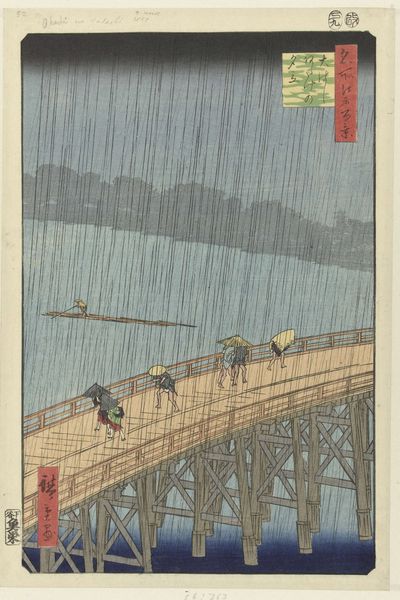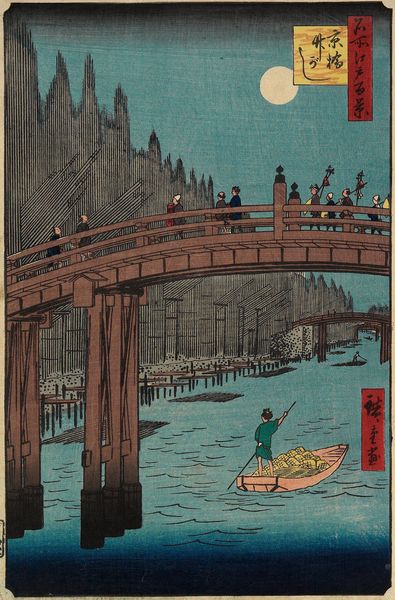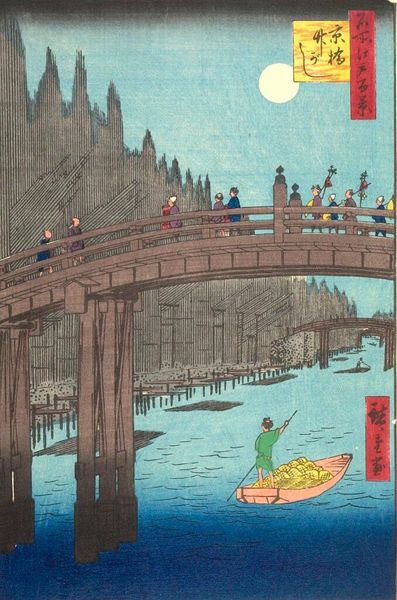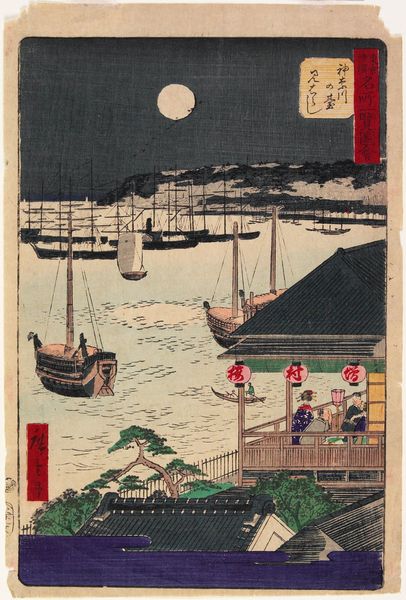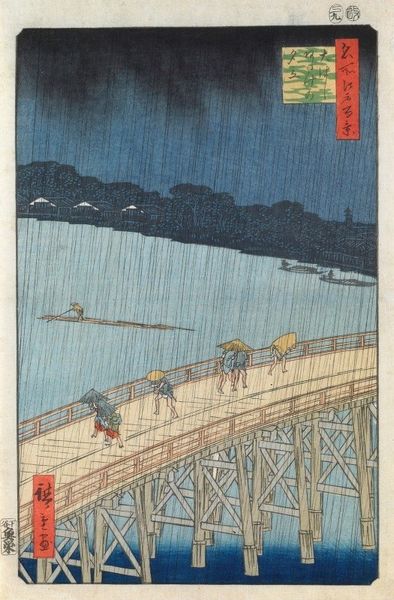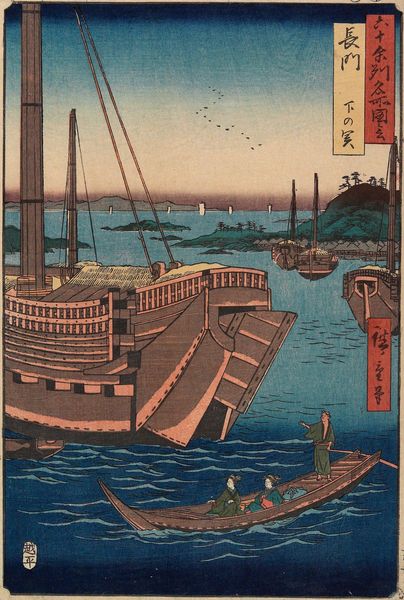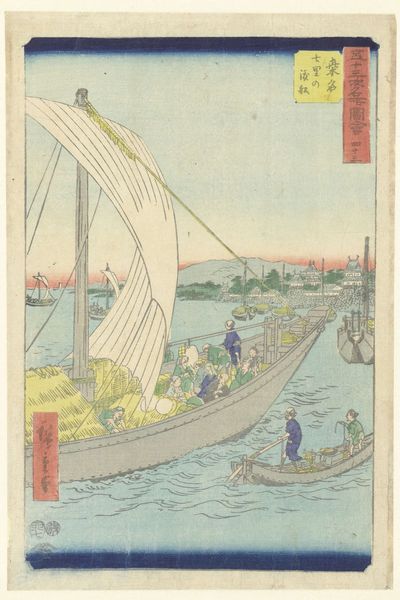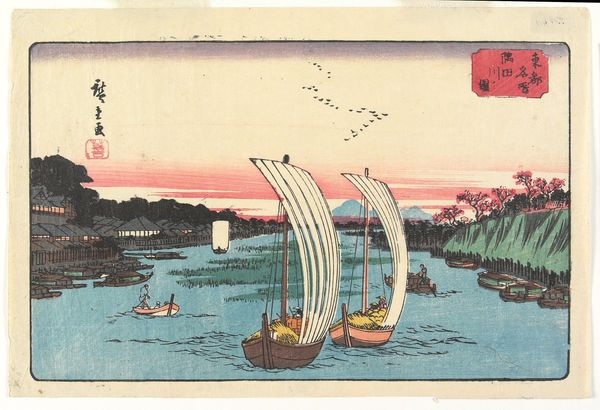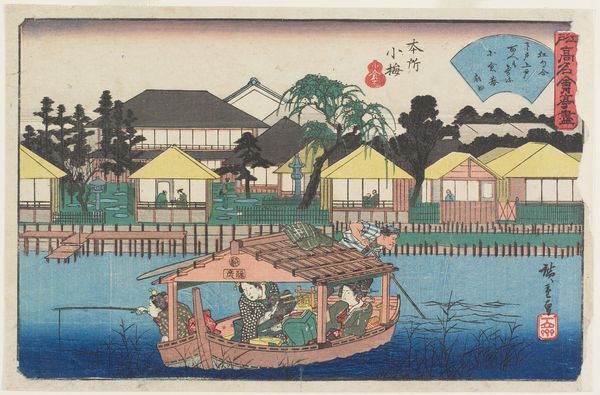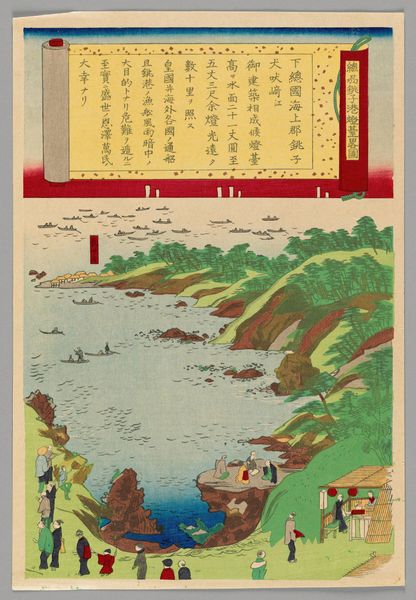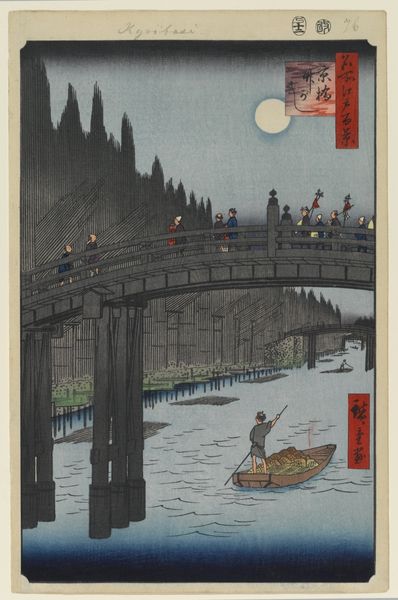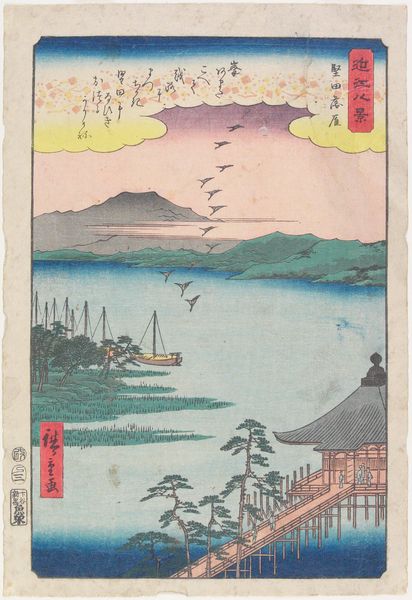
print, woodblock-print
#
ink painting
# print
#
landscape
#
woodblock-print
#
cityscape
#
watercolour illustration
Copyright: Public domain Japan
Editor: This is "Rainy Season at Ryoshimachi," a woodblock print from 1931 by Hasui Kawase. The falling rain and muted colors give the whole scene a calm, melancholic feel. What historical context might be relevant to interpreting this work? Curator: Well, considering this piece through a historical lens, it's fascinating to look at the "ukiyo-e" tradition it builds upon. "Ukiyo-e," meaning "pictures of the floating world," flourished during the Edo period and often depicted everyday life, landscapes, and actors. What elements connect Kawase to this tradition, and perhaps subvert it? Editor: I notice the focus on everyday scenery, like the boats and figures with umbrellas. But it also seems quieter, less theatrical than some earlier "ukiyo-e" prints I’ve seen. Curator: Precisely. Kawase belonged to the "shin-hanga" movement, which revitalized "ukiyo-e" by incorporating Western art influences like realism and atmospheric perspective, which speaks to a shifting cultural landscape where traditional art forms encountered new global trends. How might this artistic shift reflect the social climate of the time? Editor: Maybe a move towards a more subdued, contemplative representation of life amidst modernization? Away from strictly idealized representations? Curator: Exactly. Furthermore, understanding the role of commercial prints is crucial. These weren't necessarily 'high art' initially, but widely circulated images that shaped public perceptions. Whose stories or perspectives might be marginalized in these popular depictions? Editor: I hadn't thought about it that way – whose narratives are missing from these images. Curator: These prints, distributed and consumed widely, influenced not only artistic tastes but also social values, reflecting and shaping the visual culture of the era. Considering its reception in the West via Japonisme is vital as well, creating reciprocal exchange of art and ideas that impacts artist's career and the economy around art itself. Editor: I never realized how much historical context could be packed into one image. Thanks, this was really insightful. Curator: It shows the powerful connections art has with culture, power, and the broader public. A fascinating lens to view it from.
Comments
No comments
Be the first to comment and join the conversation on the ultimate creative platform.
